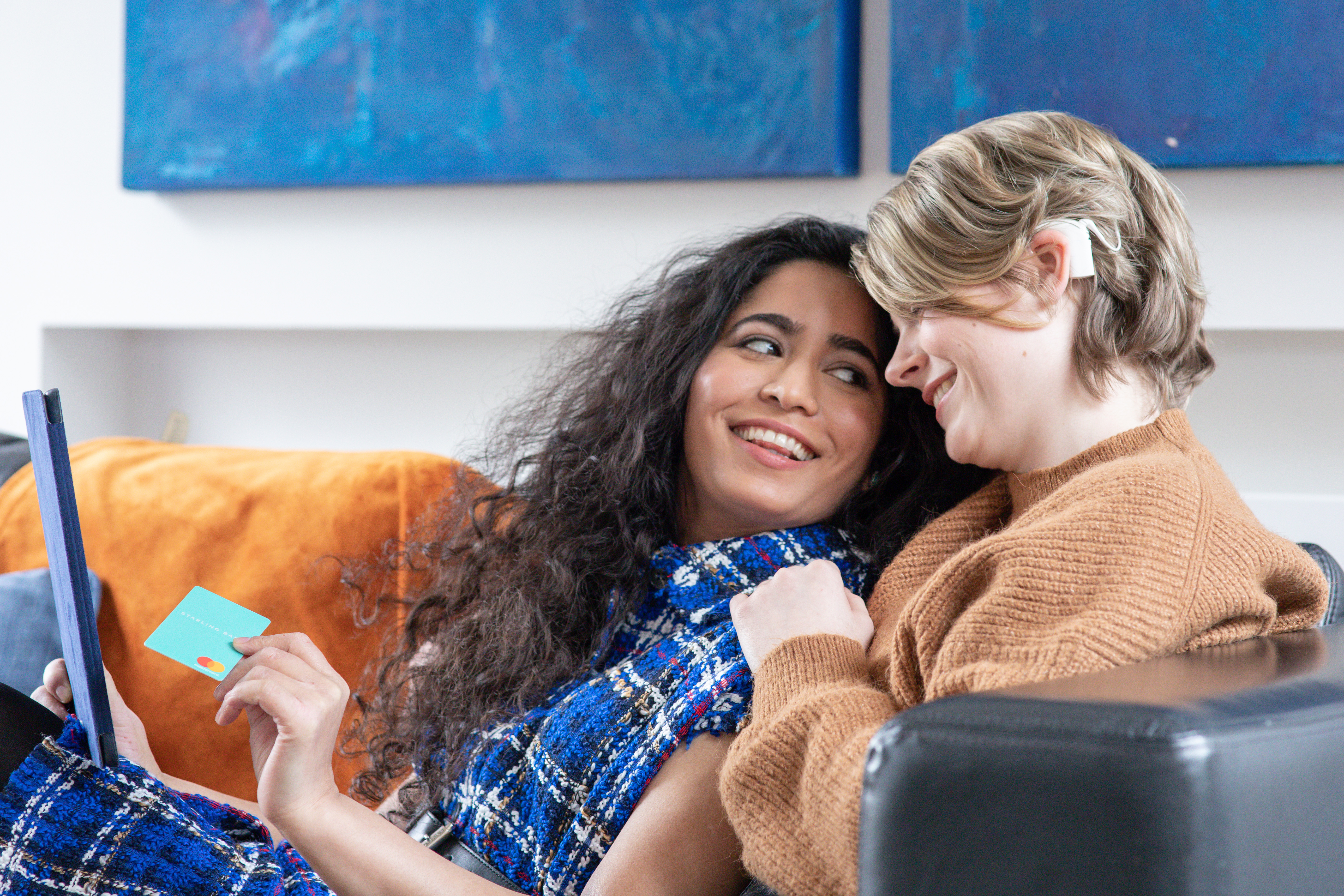Photo campaign aims to change how women are portrayed with money
The #MakeMoneyEqual photo campaign combats the way that women are often depicted as childlike when handling money

"Money is genderless" and we need parity as well as equality. That's the clear message from Starling Bank in its #MakeMoneyEqual campaign, which aims to better represent women photographically when it comes to depictions of money.
The public conversations around money and personal finances can often be seeded with negative gender stereotypes, with women's magazines and media outlets leaning towards pushing the 'bargain hunter' and 'how to cut back on spending' approaches, as opposed to the luxurious lifestyle and spending sprees encouraged for men.
• For more chilling statistics on gender bias in photography, you may be interested in: This is fact – gender & photography edition
Beginning in 2018, Starling Bank began the #MakeMoneyEqual campaign after the company recognized that women in stock and media images in relation to finances were often pictured with money in a childlike manner, clutching coins and piggy banks at home, in contrast with male counterparts who were depicted as businessmen wearing suits with a briefcase and wads of notes.
Starling Bank has commissioned a linguistics study from an agency called The Answer, where 300 articles were assessed from a mix of media outlets focusing separately on men and women. It found that money was a factor that resulted in a split of language; 65% of the assessed articles defined women as excessive spenders, and 70% of the articles aimed at men defined making money as a masculine ideal.
The company also worked with Brunel University in the UK on an investigation and gender representation report of the different ways men and women were depicted in relation to money.
It found that, when looking at leading image libraries and over 600 images that were used in articles relating to money, men were shown to be in control and making financial decisions, while women were portrayed with piggy banks in a demeaning manner, and many types of women were not shown at all.
The best camera deals, reviews, product advice, and unmissable photography news, direct to your inbox!
Starling Bank's initiatives to rectify the gender bias and better represent women in the context of money and finances, as well as filling the gaps discovered from Brunel's research, has resulted in the creation of Starling's own free image library, in collaboration with Lensi Photography, comprising 100 photographs that address and combat this problem – better representing women with money.
Negative gender stereotypes and gender biases have been subtly implemented in popular media and photography for decades, and it's extremely important that we retract these harmful depictions that are communicating a certain message and derogatory narrative, whether intentionally or not.
This also means inclusivity for all genders in media, including fair representation for trans and non-binary individuals, as well as men being unfairly held to higher expectations and standards, with the added pressure to conceal their emotions while maintaining an income.
"Our analysis revealed clear differences in how men and women are represented with money, as well as a general lack of diversity," said Professor Shireen Kanji from Brunel University, co-author of the gender representation report.
"These depictions really matter. They negatively affect not only how people are treated, but also how they feel about themselves in terms of money, which is typically used to symbolize power, influence and freedom."
Anne Boden, founder and CEO of Starling Bank, concurs. "Money is an issue for a lot of people – but women encounter far more systemic obstacles when it comes to their finances. Gender inequality reaches far beyond low salaries and boardroom tokenism; it starts with the way we’re taught. It starts with the way we’re spoken to.
"Men are advised on investment strategies, whereas women are told to stop splurging and buy fewer shoes. It’s eye-rolling stuff… Improving representation won’t happen overnight, but we hope this will move us a little closer to financial equality in visual media."
Getty Images has also been making progress in this area, creating its Disability Collection devoted to breaking stereotypes and portraying individuals with disabilities more accurately in media.
Photographers are being encouraged to consider any underlying biases they may subconsciously have when choosing models to work with in certain scenarios, setups or locations, and the narrative they are communicating to the world by doing so.
"Language is separating us into spenders and earners, into the frivolous and the empowered. That is why Starling Bank believes we need to #MakeMoneyEqual – a call to every business owner, every news editor, every podcast presenter, every headline writer and copy checker: Let's talk about money in the same way to everyone. And let's start now."
• In light of World Photography day, check out these 22 historical female photographers you need to know about. You may also be interested in Addressing the issue of gender inequality in the photography industry, or are you on the hunt for the best camera bags for women? Looking for a female-only contributor image library? Read all about Shot by Women.

Beth kicked off her journalistic career as a staff writer here at Digital Camera World, but has since moved over to our sister site Creative Bloq, where she covers all things tech, gaming, photography, and 3D printing. With a degree in Music Journalism and a Master's degree in Photography, Beth knows a thing or two about cameras – and you'll most likely find her photographing local gigs under the alias Bethshootsbands. She also dabbles in cosplay photography, bringing comic book fantasies to life, and uses a Canon 5DS and Sony A7III as her go-to setup.




